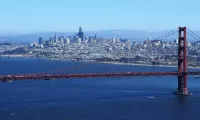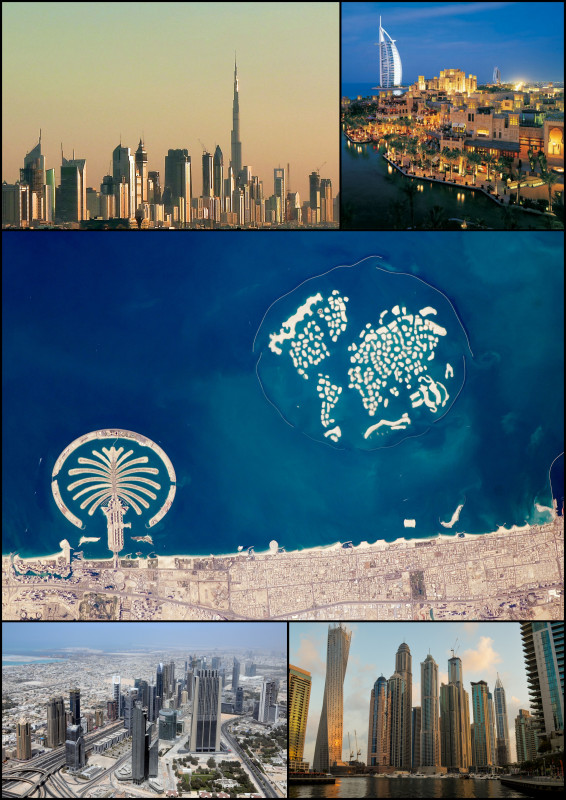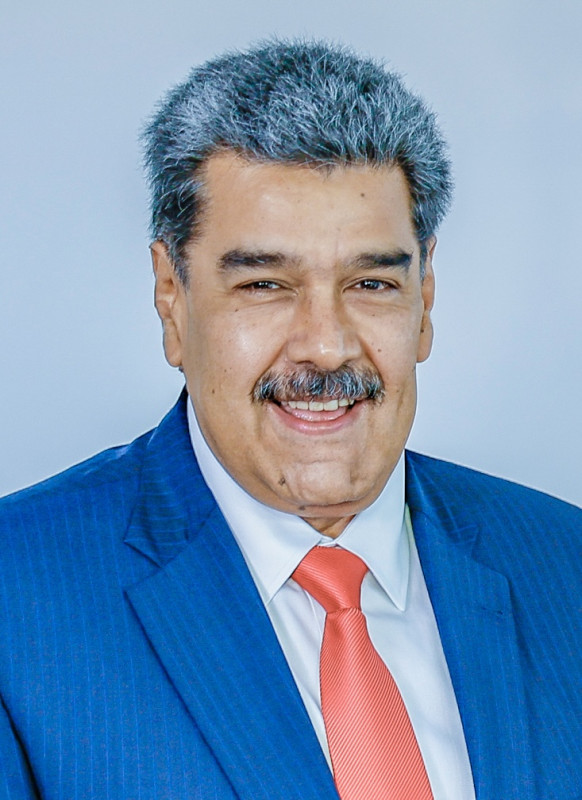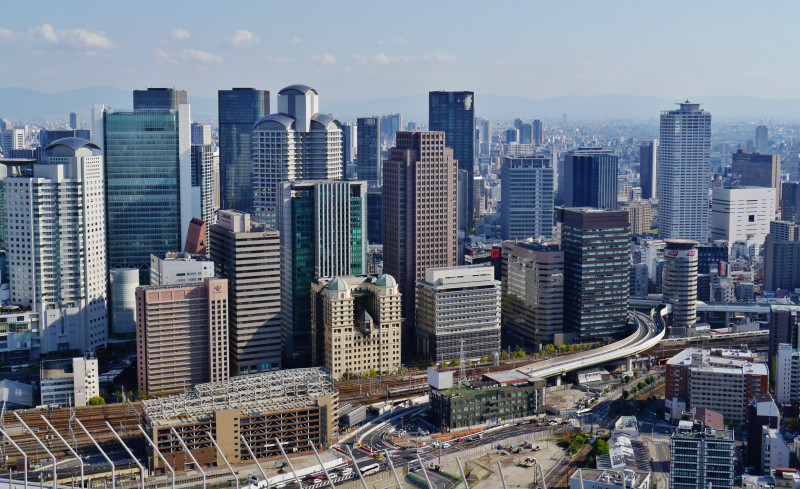Osaka is a major city in Japan's Kansai region, serving as the capital and most populous city of the Osaka Prefecture. It ranks as Japan's third-largest city with 2.7 million residents as of 2020. Osaka is the central component of the Keihanshin Metropolitan Area, the second-largest in Japan and a top-ten global urban area, boasting a population exceeding 19 million.
1920: Migration to Osaka
Between 1920 and 1930, the Great Kantō earthquake caused a mass migration to Osaka.
1925: Number of Bridges in Osaka
By 1925, Osaka had approximately 1,629 bridges.
1925: Founding of Nomura Securities
In 1925, Nomura Securities, the first brokerage firm in Japan, was founded in Osaka, highlighting the city's historical importance as a center of commerce.
1925: Expansion of Osaka
In 1925, Osaka underwent a significant expansion, adding 126.01 square kilometers to its area.
1925: Osaka Becomes Largest City
In 1925, Osaka was the largest and most populous city in Japan, ranking sixth in the world.
1927: General Motors Opens Osaka Assembly
In 1927, General Motors began operating the Osaka Assembly factory, which manufactured Chevrolet, Cadillac, Pontiac, Oldsmobile, and Buick vehicles until 1941.
1930: Osaka Becomes Japan's Largest City
In 1930, Osaka became Japan's largest city, with a population of 2,453,573.
1940: Peak Population Before WWII
In 1940, Osaka's population peaked at 3,252,340 before World War II.
1941: Closure of Osaka Assembly
In 1941, General Motors closed Osaka Assembly, a factory that manufactured Chevrolet, Cadillac, Pontiac, Oldsmobile, and Buick vehicles.
March 13, 1945: Air Raid on Osaka
On March 13, 1945, Osaka was heavily bombed by 329 Boeing B-29 Superfortress bombers of the United States Army Air Forces, resulting in the destruction of 25 square miles of the city.
June 1945: Further Bombing of Osaka
In June 1945, Osaka was bombed again by the U.S. Army Air Forces during World War II.
1956: Designated City Status
In 1956, Osaka was one of the first cities in Japan to be granted designated city status.
1965: Post-War Population Peak
In 1965, Osaka's post-war population peaked at 3,156,222.
1971: Founding of the Ad Council Japan
In 1971, the Ad Council Japan was founded in Osaka; it is now the Osaka branch.
1991: Opening of Osaka International School of Kwansei Gakuin
In 1991, Osaka International School of Kwansei Gakuin, the first international school in the Osaka area, was founded in nearby Minoh.
1995: APEC Summit in Osaka
In 1995, Osaka hosted the APEC Summit, marking one of several international events held in the city.
2000: Population in 2000
According to the census in 2000, there were 18,936,963 residents in Osaka.
July 13, 2001: Osaka Eliminated from Olympics Bid
On July 13, 2001, Osaka was eliminated in the first round of the vote for the 2008 Summer Olympics and the 2008 Summer Paralympics, with the games being awarded to Beijing.
2001: Opening of Osaka Museum of History
In 2001, the Osaka Museum of History opened in a 13-story modern building, providing a view of Osaka Castle. Its exhibits cover the history of Osaka from pre-history to the present day.
2004: Wholesale and Retail Shops Statistics
In 2004, Osaka had a large number of wholesalers and retail shops, with 25,228 and 34,707 respectively, according to city statistics. Many of these shops were concentrated in the wards of Chuō and Kita.
2004: Gross city product increase
In fiscal year 2004, Osaka's gross city product was ¥21.3 trillion, a 1.2% increase from the previous year. Commerce, services, and manufacturing were the major industries, accounting for 30%, 26%, and 11% of the total, respectively. The per capita income was about ¥3.3 million, 10% higher than that of the Osaka Prefecture.
2005: Population in 2005
According to the census in 2005, there were 18,967,000 residents in Osaka.
2005: World’s Fair held in Japan 2005
In 2005, The World’s Fair was held in Aichi Prefecture.
May 2008: Toshifumi Tagaya Becomes Council President
In May 2008, Toshifumi Tagaya (LDP) became the 104th president of the Osaka City Council.
2009: Osaka's Ranking in Most Expensive Places To Live 2009
According to the Forbes list of The World's Most Expensive Places To Live 2009, Osaka was the second most expensive in the world after Tokyo.
2009: Kintetsu Liners remain in Top League
After winning promotion in 2008–09, Kintetsu Liners, a rugby union team, again remained in the competition for the 2009–10 season. Their base is the Hanazono Rugby Stadium.
2009: Osaka: Second Most Expensive City
In 2009, Osaka was ranked as the second most expensive city in the world for expatriate employees, according to Mercer.
2010: Women's Volleyball World Championship
Osaka was one of the host cities of the official Women's Volleyball World Championship for its 2010 edition.
2011: End of fiscal year 2011
At the end of the fiscal year 2011 some 69 employees of Kansai Electric Power Company were former public servants.
2011: Tōru Hashimoto Becomes Mayor
In 2011, Tōru Hashimoto, former governor of Osaka Prefecture, became the 19th mayor of Osaka.
2011: Japan Bandy Federation Created
In 2011, the Japan Bandy Federation was created in Osaka, marking the introduction of bandy in the form of rink bandy to the city.
February 27, 2012: Kansai Cities Ask for Nuclear Power Changes
On February 27, 2012, Kyoto, Osaka, and Kobe jointly requested Kansai Electric Power Company to reduce its dependence on nuclear power and disclose information on electricity supply and demand.
March 18, 2012: Osaka Demands Changes to Kansai Electric Power Co
On March 18, 2012, the city of Osaka decided as largest shareholder of Kansai Electric Power Co, that at the next shareholders-meeting in June 2012 it would demand a series of changes.
April 10, 2012: Energy Strategy Council Meeting
On April 10, 2012, the energy strategy council revealed that 69 employees of Kansai Electric Power Company were former public servants.
June 2012: Proposal to Minimize Dependence on Nuclear Power
In June 2012, Toru Hashimoto, the mayor of Osaka, announced a proposal to minimize the dependence on nuclear power for the shareholders meeting.
June 2012: Osaka Demands Changes to Kansai Electric Power Co at the next shareholders-meeting in June 2012
In June 2012, the city of Osaka demanded changes to Kansai Electric Power Co during the next shareholders meeting.
July 2012: Osaka Metropolis Plan Bill Submitted
In July 2012, a joint multi-party bill was submitted to the Diet to implement the Osaka Metropolis plan, which proposed reorganizing Osaka City and neighboring municipalities into special wards.
March 2014: Opening of Abeno Harukas
In March 2014, the 300-meter tall Abeno Harukas opened in Osaka, becoming the tallest building in Japan at the time.
2014: Abeno Harukas Becomes Tallest Skyscraper
From 2014, the 300-meter tall Abeno Harukas was the tallest skyscraper in Japan.
May 17, 2015: Referendum on Osaka Metropolis Plan Fails
On May 17, 2015, a referendum in Osaka regarding the Osaka Metropolis plan narrowly failed, leading to the withdrawal of Tōru Hashimoto from politics.
2015: Keihanshin Population
As of 2015, the Keihanshin region, which includes Osaka, had a population of 19,303,000, representing 15% of Japan's population.
October 2018: Osaka Ends Sister City Relationship with San Francisco
In October 2018, Osaka officially ended its sister city relationship with San Francisco due to a "comfort women" monument remaining on city-owned property.
November 1, 2020: Second Referendum on Merging Wards Fails
On November 1, 2020, a second referendum to merge Osaka's 24 wards into 4 semi-autonomous wards was narrowly voted down.
2020: Osaka's Ranking in Most Expensive Places To Live 2020
By 2020, Osaka slipped to 5th rank of most expensive cities.
2020: COVID-19 pandemic.
In 2020, Expo 2020 in Dubai was delayed to 2021 due to the COVID-19 pandemic.
2020: Population in 2020
In 2020, Osaka had a population of 2.7 million, making it the third-most populous city in Japan and a major component of the Keihanshin Metropolitan Area.
2022: Loss of title of tallest skyscraper in Japan
In 2022, Abeno Harukas lost the title of tallest skyscraper in Japan.
2023: Abeno Harukas loss of title of tallest skyscraper
By 2023 Abeno Harukas no longer was the tallest skyscraper.
2023: Ichiro Matsui's Resignation
In 2023, Osaka mayor and Osaka Ishin co-leader Ichiro Matsui was set to resign when his term ended.
April 2025: Construction of MGM Osaka Begins
In April 2025, MGM Resorts began construction on MGM Osaka, set to be the first integrated resort in Japan, featuring hotel rooms, a casino, shopping, dining, convention space, and a theater.
2025: Expo 2025
In 2025, Expo 2025 is scheduled to be held at Yumeshima Island in Konohana-ku, marking Osaka as the third city to host the World Expo twice.
Mentioned in this timeline
The United States of America is a federal republic located...

San Francisco is a major commercial financial and cultural hub...
World War II - was a global conflict between the...

The Boeing Company is a multinational corporation and one of...
Japan is an East Asian island country situated in the...

Dubai is the most populous city in the United Arab...
Trending

3 months ago Reed Sheppard to come off bench for the Rockets in preseason game.

Simon Cowell is a prominent English television personality and businessman recognized for his role as a judge on various talent...
8 months ago Scott Van Pelt welcomes more ESPN golf, wears Capitals jersey to NHL game.

1 month ago Myles Turner criticizes NBA players, showcases dunk, and soars for a one-handed jam.

8 months ago Jalen Brunson's Rise, Pacers' Challenge, and Knicks' Playoff Collapse Reevaluation

3 months ago Mariah Antetokounmpo bravely reveals postpartum depression struggle after giving birth to her fourth child.
Popular

XXXTentacion born Jahseh Dwayne Ricardo Onfroy was a controversial yet...

Carson Beck is an American college football quarterback currently playing...

Stranger Things created by the Duffer Brothers is a popular...
Curt Cignetti is an American college football coach currently the...

Marco Rubio is an American politician attorney and diplomat He...

Nicol s Maduro is a Venezuelan politician who has served...
